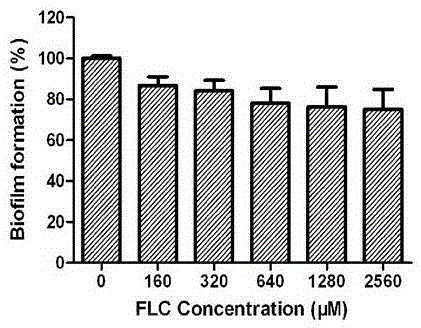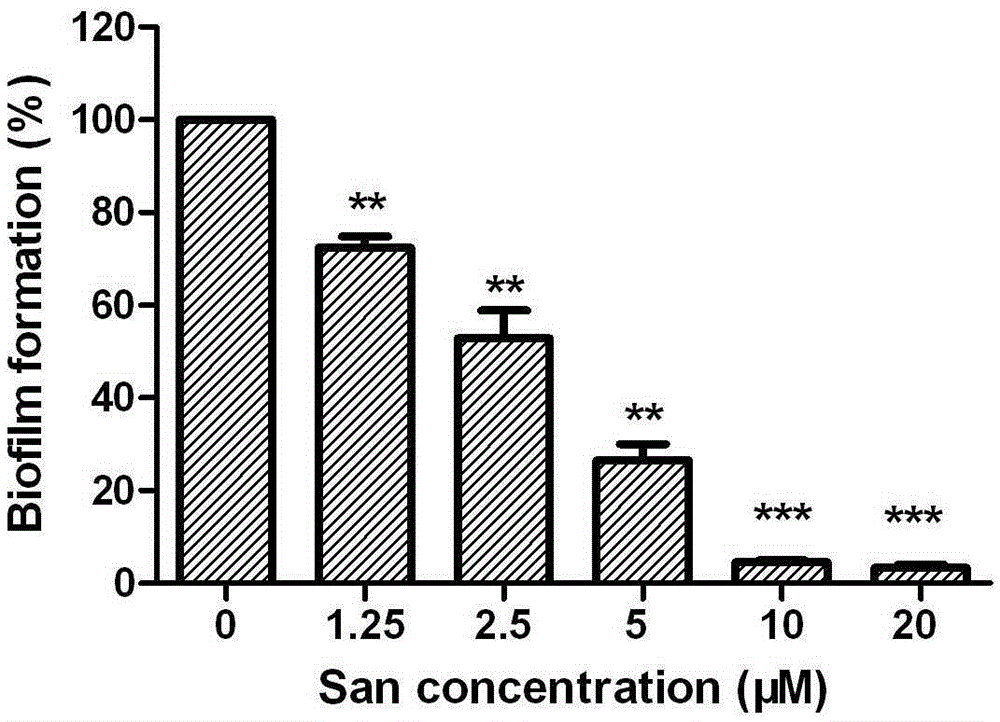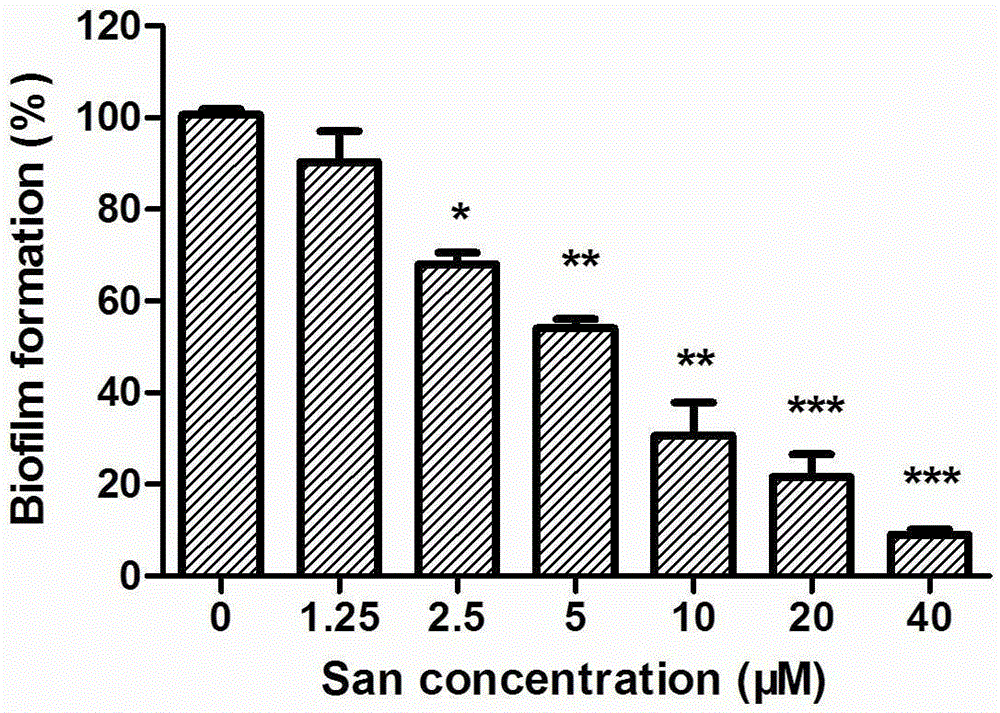Application of sanguinarine in the preparation of antifungal biofilm drugs
A biofilm, sanguinarine technology, applied in the field of medicinal chemistry, can solve the problems of adverse reactions of receptors, unsuitable for antifungal biofilms, and no inhibition of biofilms.
- Summary
- Abstract
- Description
- Claims
- Application Information
AI Technical Summary
Problems solved by technology
Method used
Image
Examples
Embodiment 1
[0077] Example 1: Preparation of antifungal biofilms
[0078] Take 4g PVA, 0.7g sorbic acid, 0.5g glycerin and add 10ml water and mix well, after soaking and swelling, heat to 90 degrees Celsius to dissolve, add sanguinarine ground into micropowder, add 20ml water, stir well, keep at 45 degrees Celsius set to remove air bubbles. After preheating the glass plate to the same temperature, coat the film to a thickness of about 0.15mm, dry at 70 degrees Celsius, and release from the mold.
Embodiment 2
[0079] Example 2: Preparation of Antifungal Biofilm Emulsion
[0080] Take 8ml of distilled water and put it in a beaker, add 4g of rubber powder to make a mortar, transfer the mortar to a mortar and add 12g of sanguinarine in batches, add and grind until colostrum is formed, and then divide the colostrum with a small amount of distilled water. Transfer to the measuring cup, add the ethyl paraben alcohol solution dropwise with stirring, and finally add distilled water to the full amount, and stir well.
Embodiment 3
[0081] Example 3: Preparation of Antifungal Biofilm Ointment
[0082] Take the raw drug and grind it into micropowder, add oil phase, water phase, emulsifier and preservative matrix respectively according to a certain proportion, stir and mix in a heating water bath, cool to room temperature and stir again to make sanguinarine and matrix completely mixed to obtain an ointment.
PUM
 Login to View More
Login to View More Abstract
Description
Claims
Application Information
 Login to View More
Login to View More - R&D
- Intellectual Property
- Life Sciences
- Materials
- Tech Scout
- Unparalleled Data Quality
- Higher Quality Content
- 60% Fewer Hallucinations
Browse by: Latest US Patents, China's latest patents, Technical Efficacy Thesaurus, Application Domain, Technology Topic, Popular Technical Reports.
© 2025 PatSnap. All rights reserved.Legal|Privacy policy|Modern Slavery Act Transparency Statement|Sitemap|About US| Contact US: help@patsnap.com



